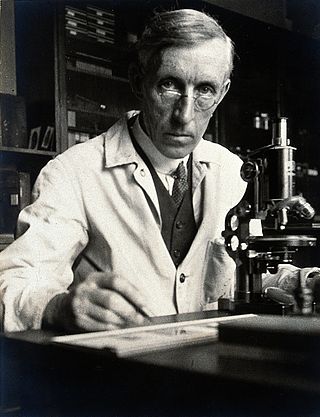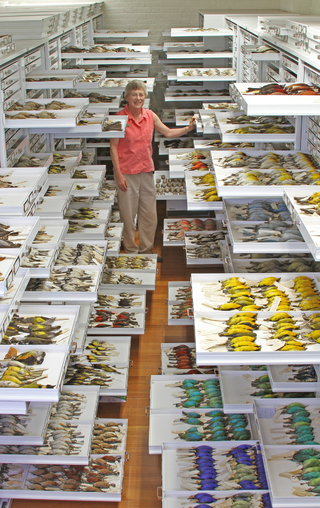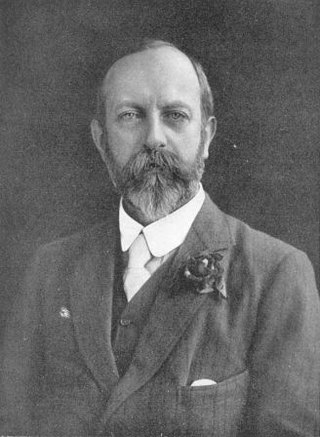University College London, which operates as UCL, is a public research university in London, England. It is a member institution of the federal University of London, and is the second-largest university in the United Kingdom by total enrolment and the largest by postgraduate enrolment.

The Oxford University Museum of Natural History (OUMNH) is a museum displaying many of the University of Oxford's natural history specimens, located on Parks Road in Oxford, England. It also contains a lecture theatre which is used by the university's chemistry, zoology and mathematics departments. The museum provides the only public access into the adjoining Pitt Rivers Museum.

Robert Edmond Grant MD FRCPEd FRS FRSE FZS FGS was a British anatomist and zoologist.

Sir Edwin Ray Lankester was a British zoologist.

Walter Frank Raphael Weldon FRS, was an English evolutionary biologist and a founder of biometry. He was the joint founding editor of Biometrika, with Francis Galton and Karl Pearson.

The National Museum of Ireland – Natural History, sometimes called the Dead Zoo, a branch of the National Museum of Ireland, is housed on Merrion Street in Dublin, Ireland. The museum was built in 1856 for parts of the collection of the Royal Dublin Society and the building and collection were later passed to the State.

James Peter Hill FRS was a Scottish embryologist.

The Museum of Comparative Zoology is a zoology museum located on the grounds of Harvard University in Cambridge, Massachusetts. It is one of three natural-history research museums at Harvard, whose public face is the Harvard Museum of Natural History. Harvard MCZ's collections consist of some 21 million specimens, of which several thousand are on rotating display at the public museum. In July 2021, Gonzalo Giribet, Alexander Agassiz Professor of Zoology at Harvard and Curator of Invertebrate Zoology, was announced as the new director of the museum.
Francis Arthur Bather FRS was a British palaeontologist, geologist and malacologist. His mother, Lucy Elizabeth Blomfield, was a daughter of Charles Blomfield, Bishop of London. His father, Arthur Henry Bather, who was deaf, was a clerk in the office of the Accountant-General for the Navy.

The Harvard Museum of Natural History (HMNH) is a natural history museum housed in the University Museum Building, located on the campus of Harvard University in Cambridge, Massachusetts. It features 16 galleries with 12,000 specimens drawn from the collections of the University's three natural history research museums: the Harvard University Herbaria, the Museum of Comparative Zoology, and the Harvard Mineralogical Museum.

The Natural History Museum of Geneva is a natural history museum in Geneva, Switzerland.

The University Museum of Zoology is a museum of the University of Cambridge and part of the research community of the Department of Zoology. The public is welcome and admission is free (2018). The Museum of Zoology is in the David Attenborough Building, formerly known as the Arup Building, on the New Museums Site, just north of Downing Street in central Cambridge, England. The building also provides a home for the Cambridge Conservation Initiative, a biodiversity project.

A zoological specimen is an animal or part of an animal preserved for scientific use. Various uses are: to verify the identity of a (species), to allow study, increase public knowledge of zoology. Zoological specimens are extremely diverse. Examples are bird and mammal study skins, mounted specimens, skeletal material, casts, pinned insects, dried material, animals preserved in liquid preservatives, and microscope slides. Natural history museums are repositories of zoological specimens
Bradley Curtis Livezey was an American ornithologist with scores of publications. His main research included the evolution of flightless birds, the systematics of birds, and the ecology and behaviour of steamer ducks.
Alexander Carte MD, FRCSI, MRIA was an Irish zoologist and palaeontologist and was first director Natural History Museum, Dublin.
The D'Arcy Thompson Zoology Museum is a museum of zoology at the University of Dundee in Scotland.

The glass sea creatures are works of glass artists Leopold and Rudolf Blaschka. The artistic predecessors of the Glass Flowers, the sea creatures were the output of the Blaschkas' successful mail-order business of supplying museums and private collectors around the world with sets of glass models of marine invertebrates.

Edward Alfred Minchin was a British zoologist who specialised in the study of sponges and Protozoa. He became Jodrell Chair of Zoology at University College London in 1899, Chair of Protozoology at the University of London in 1906, and was elected a Fellow of the Royal Society in 1911.

Miranda Constance Lowe is a British museum curator. She is principal curator of crustacea at the Natural History Museum, London and a founder member of Museum Detox.
The Jodrell Professor of Zoology and Comparative Anatomy is a chair at University College London, endowed by TJ Phillips Jodrell in 1874.




















